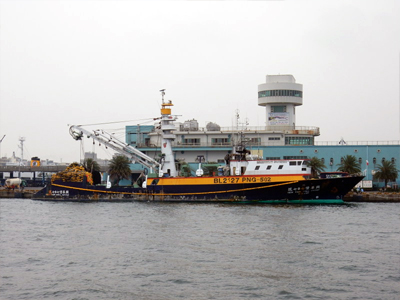
The distant water purse seiner fleet of Chinese Taipei (Taiwan) caught the most volume of tuna despite a drop in vessel numbers and the decline in catches in the previous years from 2015-2017.
Since the 1990s, setting on free-swimming schools has become the most prevailing method for this fleet. According to the provisional estimate from WCPFC, in 2018, 62.3 percent of sets were deployed on free-swimming schools.
The following table (data from the WCPFC) shows not only the active distant water purse seiners (DWPS) in the WCPFC Convention Area (WCPO) during 2014-2018, but also the major tuna species caught by these vessels.

According to the WCPFC, since 2014, the Taiwanese DWPS were capped at 34. This number held steady until 2017. Despite the number of vessels remaining the same, total catches continued to decline.
The serious fall in catches in 2017 is most probably co-related to six vessels leaving the fleet. On the other hand, even though there was one less boat last year, it turns out that it was the second-most productive year for the Taiwanese seiner fleet – with a 15 percent increase.
According to FFA’s report on the WCPO Distant Water Purse Seiner Tuna Fishery, 2018 was an exceptionally bad yellowfin year for the Taiwanese fleet. The volume dropped to 28,427 M/T, a 14.7 percent decline, which was the lowest in the last six years. This was a reversal in the increasing trend from 2015-2017. For skipjack, 2018 was the second-best year for Taiwanese operators.
LOCATION OF FISHING GROUNDS
Taiwan had only 95 high seas purse seine fishing days allocated to it and its vessels fished predominantly in the EEZs of PNA nations. Fishing in Kiribati has been limited to the Gilbert lslands chain. However, the approval of Tarawa and Christmas lslands as authorized transshipment ports by the Taiwan Fisheries Agency in April 2019 may change this situation, states the FFA report.
The distribution of fishing effort in the most recent five years (2014-2018) is shown in the graphs below. It shows the fishing effort distributions of the DWPS fleet during this period. During the years when the El Niño phenomena occurred, such as in 2015, fish tend to move more eastwards and the fishing activities follow this pattern of movement.
In contrast, in years of La Nina, fish schools tend to concentrate more in the western part of the Pacific, and the fishing activities move likewise.
